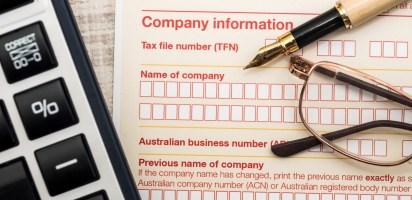
Source: Unsplash/Freestocks.
The first domain name was registered by computer company Symbolics in the US on March 15, 1985. The first Australian domain name was registered nearly a year later on March 5, 1986.
There are an estimated 3.4 million registered domain names in Australia. No wonder it is hard to find a name for a startup!
Over the years there have been tens of thousands of disputes over the registration of domain names. Initially buying a domain name was on a first come first served basis so there were many who registered domain names to sit on them with the intention of making a profit.
One of the biggest changes since 1986 happens tomorrow for Australian businesses with the deadline closing to apply for a domain name ending in .au.
Get daily business news.
The latest stories, funding information, and expert advice. Free to sign up.
Businesses have been given many months to register their .au domain name — but missing the deadline and not registering will be a costly oversight.
Smaller companies are likely to be across it but with larger companies it may fall between the cracks because someone from one department thought someone from another department was going to do it.
Fighting over domain names is not fun. It is time consuming and can be costly so spending under $25 to register your .au is money well spent.
The next major milestone after tomorrow is October 4 when names are released from priority hold and available for registration by anyone. And there will be hundreds, if not thousands, of people seeing what names they can register.
They can look back and see what happened in the 80s with people sitting on popular domain names looking to make a profit. Of those that have been publicly reported carinsurance.com sold for US$49.7 million, insurance.com for US$35.6 million and vacationrentals.com for US$35 million. The 20th ranked one is beer.com which sold for US$7 million.
Once a domain name is registered it is not easy to get back from a legal perspective. Disputes for .com domain names need to run through the international system managed by the World Intellectual Property Organisation (WIPO) and .com.au through the auDA.
Once you have registered your .au domain you should consider applying to register a trade mark for any brand name that appears in your existing domain name. Trade mark registrations put domain name owners in the strongest position to deal with third parties who illegitimately seek to register domain names that copy a trade mark registration.
For legal issues relating to domain names, it’s inevitably the case that prevention will be better than the cure.
It is worth reiterating that to be eligible for first access to the .au domain, applicants need a verifiable Australian presence. For businesses, that means being registered in Australia through an ABN for example.
Businesses will fall into one of two categories. Businesses that have domain names created before February 4, 2018 will fall into Category One. Those with domain names created after that date and before March 22, 2022, fall into Category Two.
If there are two entities claiming to have priority rights to the same .au domain, a Category One business will take precedence. If both entities are Category One applicants, they must agree among themselves, otherwise the .au domain will remain unallocated.
If there are only Category Two applicants, the .au domain goes to the business with the domain licence that was created first.
Even with the priority claim process, there will still be disputes. And disputes can be costly. We are talking in the tens of thousands of dollars. The upside is that resolution through auDA is reasonably quick — around two to three months.
There are three options with any dispute.
- Do nothing and the domain name stays with the current registrant.
- The domain name registration is cancelled and becomes available to the general public, even if the original registrant has paid a significant sum for the domain.
- The domain name is transferred to the party that raises the dispute.
One of the biggest challenges we all face with domain names is finding out who has registered it. It used to be that you could simply search online and find the current registrant and approach them if you wanted to buy it. Now, for top level domains, it is much harder to find who the current registrant is and obtaining these details may require filing a complaint with WIPO to get the registrant’s details.
Filing a complaint with WIPO costs much less than litigation, and it can be actioned quickly (within a week or two) with guidance from an expert.
With .com.au domain names being around since 1986 it’s surprising how disputes regularly still arise today. I can only assume that with the .au domain names there will continue to be disputes, particularly in the short term.
You can find accredited registrars for registering your .au domain name here.
Len Hickey is an IP Partner at leading legal firm Cornwalls.
Handpicked for you

Are employees motivated by job insecurity? Researchers disagree on the answer




COMMENTS